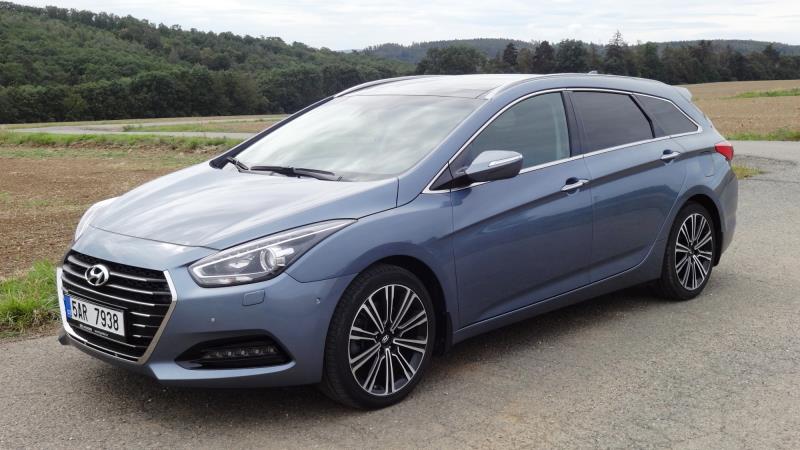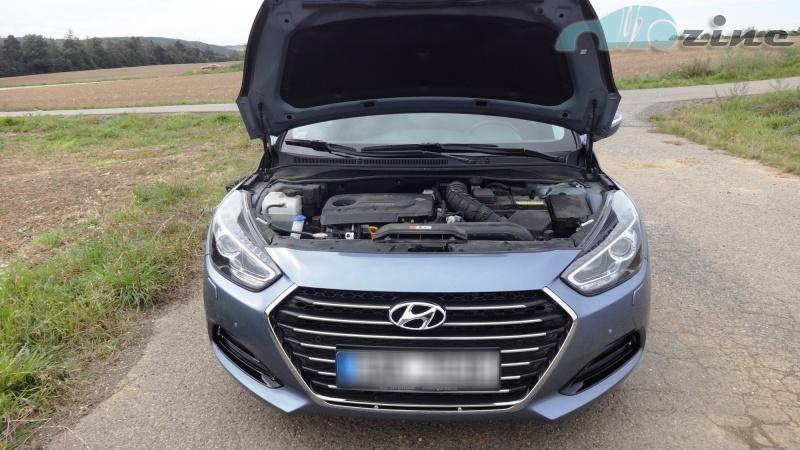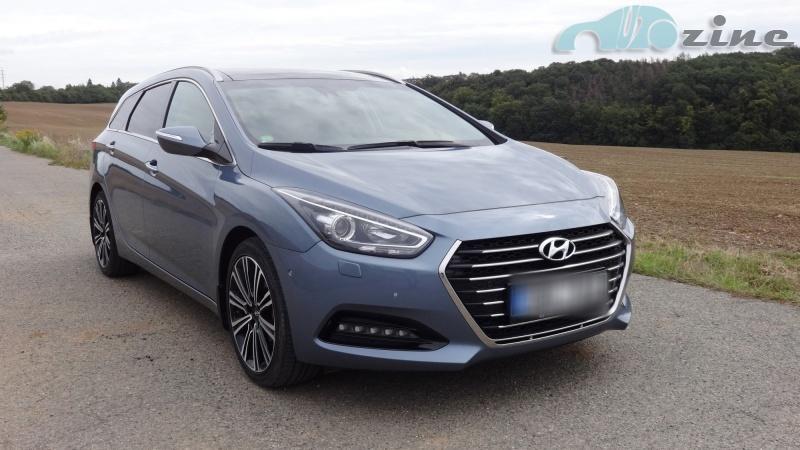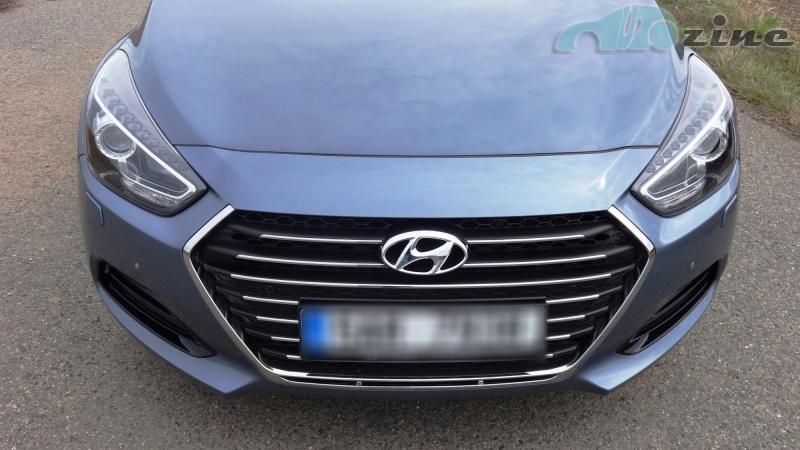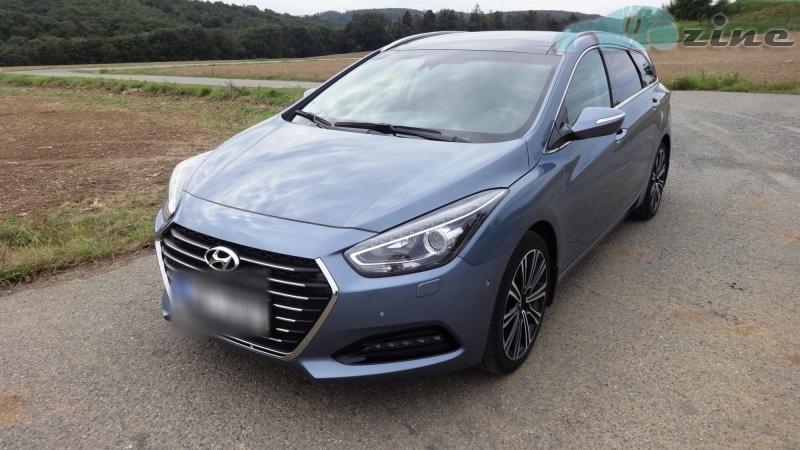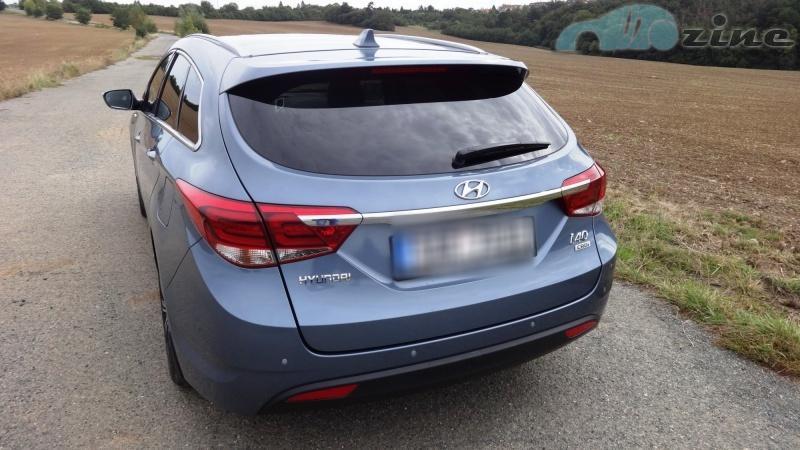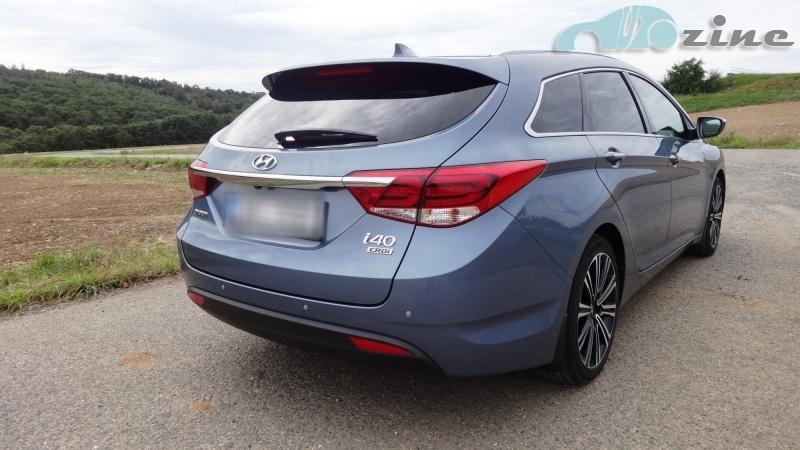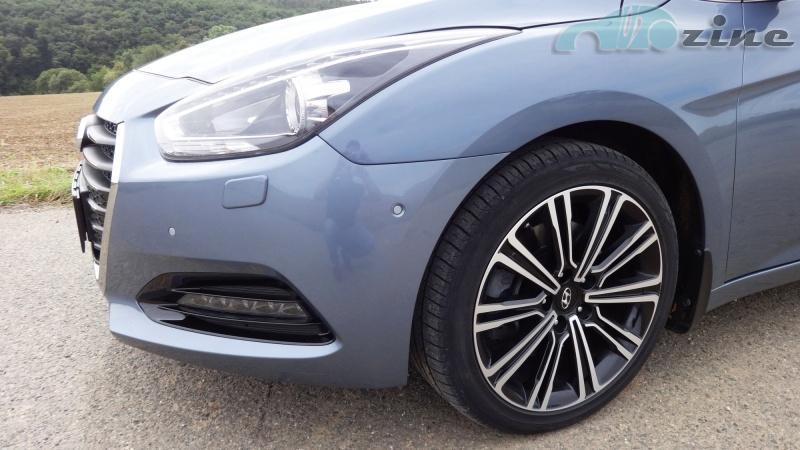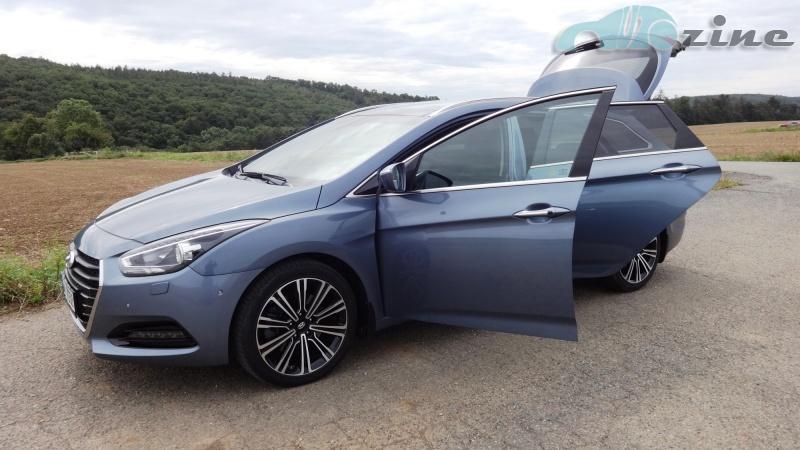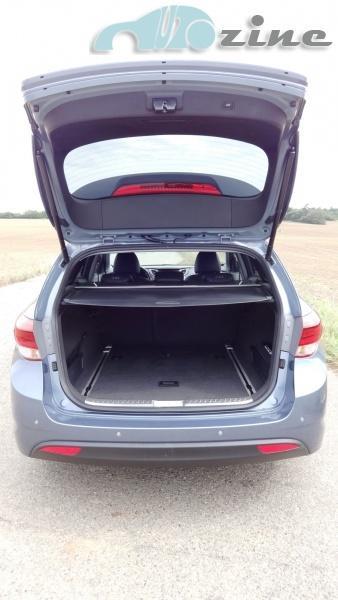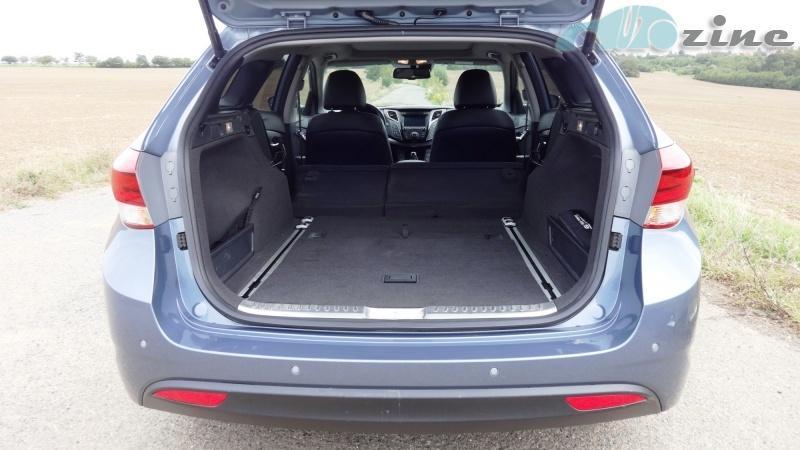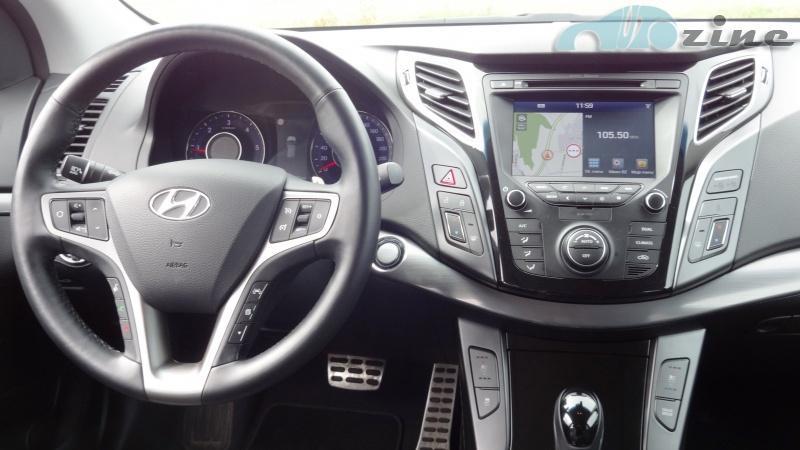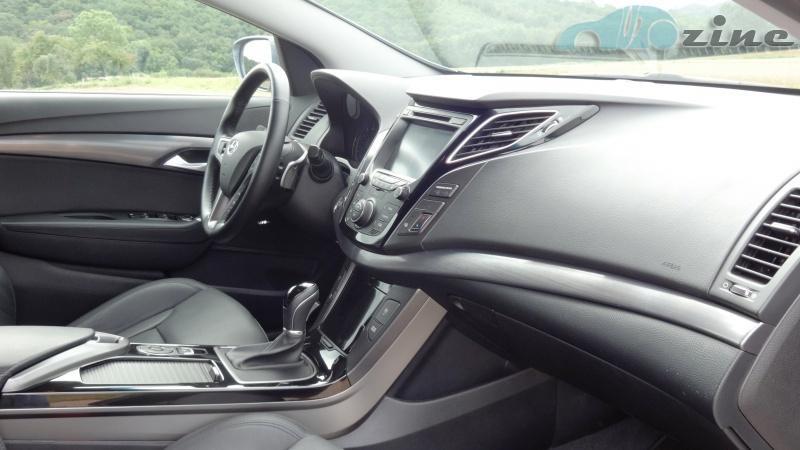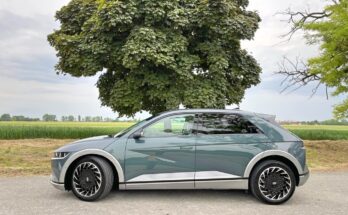We have just tested the modernized Hyundai I40 in the station wagon version with Premium equipment and the Luxury package with a panoramic roof.
This is a very practical station wagon, which has already secured a solid position among its competitors in the given class.
Skoda Superb, Ford Mondeo, Volkswagen Passat, or the recently tested Mazda 6 are really not easy rivals for Hyundai.
The version we tested was equipped with a diesel seventeen-cylinder engine with an automatic transmission.
EXTERIOR
Compared to its predecessor, the 40 "sharpened the edges" with its design. This is most evident on the front mask of the car, which has grown significantly and expanded to the space of the car's bumper itself.
The front mask received a horizontal chrome grid with a pronounced side bend, also chrome, as it has been in lately . Together with the redesigned headlights with LED lighting, this gives the front part of the car a dynamic, predatory look.
It is also necessary to mention the side silhouette of the car. The roof of the car reaches its peak where the front doors end. From this point, the roof slopes slowly towards the rear, where it merges into a rather prominent and voluminous rear door lollipop, in which the brake light is integrated.
All the side windows are lined with a chrome line that turns into a rounded tip at the very end, which forms an interesting counterpoint to the rear lights in the side part of the car.
The rear of the 40s is dominated by relatively large taillights, which are prominently applied and extend into the side parts of the car. The rear lights are connected by a chrome line that underlines the entire rear.
The tested version was equipped with impressive 18-inch discs in a contrasting black-chrome combination with low-profile tires.
The car's design is one of the more daring in its class, the forty-year-old wants to be liked and she succeeds.
INTERIOR
After getting into the car, you are greeted by a melody and it is indicated that everything is ready and ready to go :). Furthermore, your seat will return to the last set position (when the door was opened, it was moved for better entry and exit). In the given equipment, 2 memories for setting the seat position are a matter of course.
The instrument panel has a massive impression, but its workmanship is of high quality.
Together with the steering wheel, it is equipped with a number of different controls, which is due to the relatively rich equipment that the car has. The control is quite intuitive and you get used to it quite quickly.
The instrument panel is dominated by a seven-inch touch digital display in its central part, which, together with the ventilation vents and other control elements of the car, is embedded in a kind of dynamic mass, a chapel that effectively grows out of the central panel, on which other control elements continue, such as heating, seat ventilation, or driving mode selection.
Yes, the I40 has a choice of 3 driving modes, normal, eco and sport.
In addition to the automatic selector, there are parking assistant controls or handbrake controls in the center panel.
The steering wheel of the vehicle is equipped with controls for the audio system, on-board computer, bluetooth hands-free phone and cruise control, and in the tested equipment it was also heated.
The hood in front of the driver is equipped with a tachometer and a speedometer, the centers of which show the fuel gauge, the engine temperature and the engaged gear. The display of the on-board computer is located between the tachometer and the speedometer.
The tested version was equipped with front and rear parking sensors, which you will definitely appreciate, because the relatively massive A-pillar and lower side windows do not give you much of a view from the car.
The 400 was also equipped with an automatic parking system and a parking camera in case "I'd rather park myself".
The seats were leather, the front seats were additionally equipped with heating or ventilation, in both cases in three levels of intensity. Electric adjustment of the position of the front seats was also a matter of course.
A lane keeping assistant was also installed in the vehicle. The assistant warns you with a sound signal that the car has crossed the lane without using the blinker, but the 40-year-old returns the car to the original lane by moving the steering wheel. However, it is necessary to keep your hands on the steering wheel, if not you are warned about it and the system is subsequently switched off. Personally, I'm a bit of an old-timer when it comes to these things, and I haven't used the assistant.
What I appreciated was the forty-something's ability to read traffic signs. This is certainly useful if you are a little careless and overlook the current brand.
It is also necessary to mention the panoramic retractable glass roof. Very effective, of course for an additional fee.
The rear seats of the vehicle are comfortable and spacious. Their backrests fold down with levers directly from the trunk, which with its volume of 533 liters is one of the more spacious.
The fifth door of the trunk is folded automatically by remote control or a button on the instrument panel.
In addition, the floor of the trunk was equipped with a system that prevents the movement of individual objects.
ENGINE AND RIDE
The tested version was equipped with a diesel seventeen-cylinder engine with an automatic DCT dual-clutch transmission.
Although the engine was boosted by 4kW as part of the modernization in 2015 to a total of 104 kW of power, it is still not what would be quite befitting of such a vehicle that has strong ambitions.
The seven-speed automatic works quite well with the engine. At a highway speed of 130 km/h, the engine turns around a pleasant 2300 revolutions .
The automatic transmission can also be controlled with paddles under the steering wheel. I didn't use the paddles or the change of driving modes much, the 40 is simply about something different than this, but I understand the effort to satisfy a wide range of customers.
During the test, fuel consumption was slightly above the 6-liter mark .
The car's chassis is comfortably tuned, the tested car was shod on low-profile 18 tires, so we were denied a bit of comfort in favor of a feeling of security when cornering.
CONCLUSION
The car will appeal to more relaxed drivers, of course it will also satisfy the demands of a growing family, or as a company car fleet of a prosperous company.
The Hyundai I40 has been on the market for quite some time, its current rejuvenated version has injected new blood into the model's veins and we like it.
Compare the parameters of the Hyundai i40 with the competition

